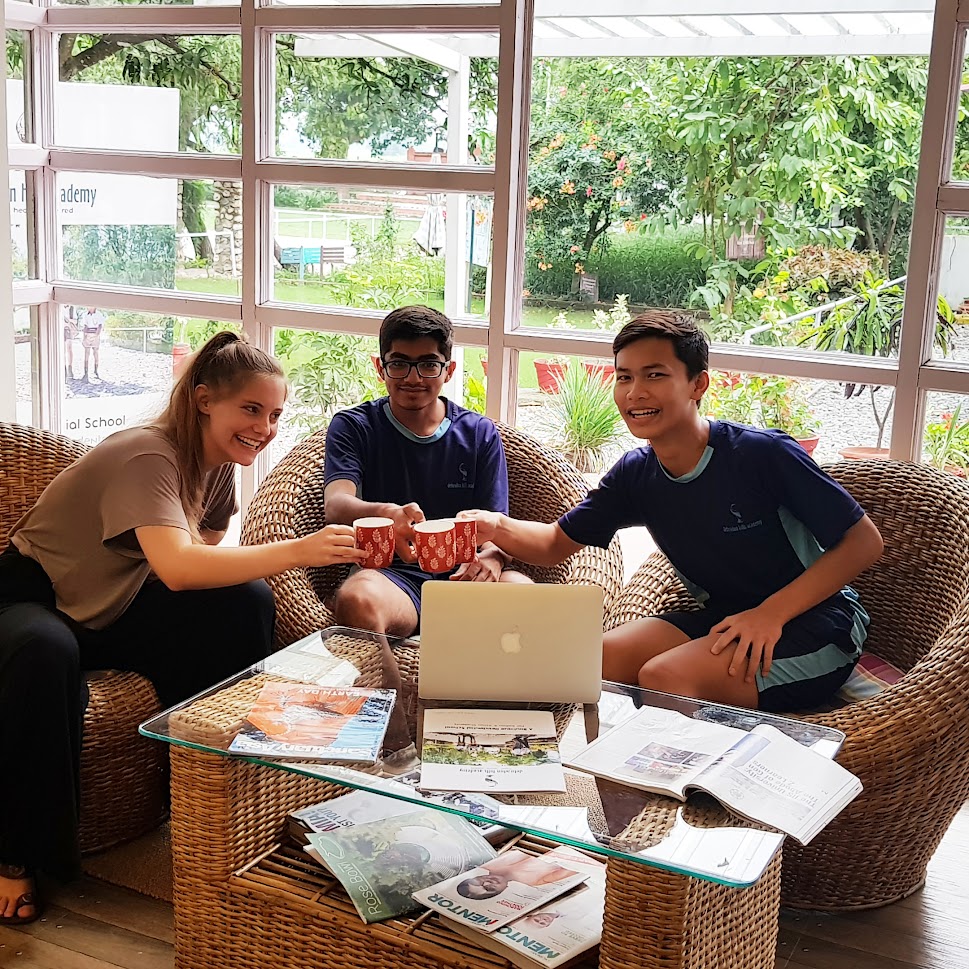How Does Meditation Help Children's Body and Mind?
With today’s world gradually becoming more and more demanding, the pressures put on children—mentally and physically—are becoming more evident issues. Meditation, once seen as an adult-only practice, is now recognized for its benefits for children.
672218fc72335.jpg)
With today’s world gradually becoming more and more demanding, the pressures put on children—mentally and physically—are becoming more evident. Meditation, once seen as an adult-only practice, is now recognized for its benefits for children. More often, schools and parents include meditation in kids' routines, helping them develop emotional intelligence, focus, and presence of mind. In today’s world, children are exposed to technology, academic stress, and social pressure to be the best. In today's world of tech, academic stress, and the pressure to be the best, meditation teaches kids early on how to take control.
Why is meditation important in today’s world?
Modern life pressures impact children as much as adults. With busy schedules filled with school and extracurricular activities, their days can quickly turn overwhelming. Besides, excessive time spent watching television or playing computer games often leaves them overstimulated and restless. This makes meditation not only useful but imperative. It helps kids calm down, appreciate stillness, and build the mental strength to handle life’s challenges. It educates them on taking a break, thinking, and focusing on themselves when there is so much noise.
Benefits for the Mind
Improved Focus and Concentration
The first and possibly the most obvious advantage of meditation for children is in the area of concentration. In the present generation, young children face more difficulty sustaining attention. Meditation teaches children how to clear their minds and focus on a single idea or a particular breathing rhythm; the result is a marked increase in students’ ability to concentrate. This practice benefits them in the classroom by improving their work results and efficiency, free from interruption.
Emotional Regulation
Youngsters are still in the process of developing EI, and meditation can to a great extent support the process. Practicing meditation regularly enables the child to know how to handle anxiety and stress, as well as mood swings. By focusing on breathing or using guided imagery, children are trained on how to respond to stressors, and as a result, they exhibit low rates of temper tantrums. It further strengthens the ability to foster positive relationships, both with peers and key adults in a child's life.
Better Sleep
Sleep is essential for the human body, especially for children. But today children are victims of sleepless nights due to overstimulation and anxiety. Cognitive techniques, including deep breathing, body scans, and guided visualization, can help calm them, ease them into sleep, and ensure they rest through the night. As a result, children wake up feeling refreshed and energized, ready to take on the day’s activities.
Increased Self-Awareness
Meditation consists of one component called mindfulness, which focuses on self-reflection and awareness. For children, this means paying more attention to how one thinks, feels, or behaves. This improved self-consciousness enables children to understand how different feelings affect their conduct, improve their decisions, and learn to relate with others in a friendly manner. In the long run, this type of mindfulness practice assists these children in developing a sense of self-identity and self-assertion.
Benefits for the Body
Reduced Stress
Stress is not only a problem that affects adults but children as well, who experience stress from school, peer pressure, and family pressure. Meditation also reduces cortisol, the stress hormone, helping the body unwind. Headaches, stomachaches, and muscle tension are some of the physical symptoms you are likely to experience if stressed, but practicing meditation will help reduce these symptoms. Children can learn how to quiet the mind, and the body follows this so they feel whole again.
Boosted Immune System
Lack of distraction, therefore, is not only good for the mind, but the body is also built through meditation. Research has also indicated that meditation will enhance the immune system by decreasing inflammation and enhancing the number of immune cells. For children, this means fewer days being out of school due to sickness and overall better or healthier bodies. This is because a healthy immune system is necessary in young children so that every child can perform well academically and socially.
Improved Posture and Physical Awareness
Meditation involves remaining still, and this helps children learn how to hold their bodies rightly. This awareness leads to improved physical attitudes like sitting upright and being keen on how the body moves. Problems such as back pain and poor circulation, which are already quite widespread among children, could be avoided if children have correct posture.
Real-Life Examples
Success Stories of Schools Integrating Meditation Practices
Many boarding schools in India have adopted meditation practices into their school system and experienced qualitative changes in students’ behaviour and academic achievements. For example, a school in Baltimore recently replaced detention with meditation time. The findings were astonishing—kids improved their attention, reduced aggressiveness, and stated that they felt less anxious. Teachers reported fewer behavioral problems and a better classroom climate.
Case Study of Children Showing Improved Mental and Physical Health
A mindfulness program conducted in one of the schools in California noted that children who meditated had reduced symptoms of anxiety and better focus. The children also complained of fewer somatic symptoms like headaches and fatigue. The students also improved their motor activities because meditation enabled them to be more conscious of their health.
How to Get Started
Easy Meditation Techniques for Children
As you might have noted, beginning meditation with children does not necessarily require great planning. Basic relaxation techniques, such as deep breathing techniques, visualization, and progressive muscle relaxation, can be taught in small, more easily digestible portions. One of the techniques is called “belly breathing,” where kids put their hands on the area of the belly and try to feel how the breath goes up and down. Another helpful strategy is the “listening exercise," where children have to close their eyes and listen to sounds around them for several minutes to pay attention to the current time.
Tools and Resources for Parents and Teachers
There are many ways that parents and teachers can expose kids to meditation. Many applications, such as Headspace and Calm, feature children-friendly guided meditations from a few minutes to a longer one. Books and videos are also created to teach children about mindfulness and meditation. This means that meditation could be easily incorporated into schools by offering a few minutes in the morning or evening.
Conclusion
Meditation has a powerful, long-term positive impact on children’s mental and physical health. Apart from the direct benefits of meditation in increasing its time, the following are some benefits of meditation: Meditation can enhance attention span, emotional self-regulation, immune system, and posture besides the meditation session. In a society where children are so busy with the stimuli around them, having a tool to calm the mind and be able to focus on oneself is very valuable.
Parents and educators can play an important and very valuable role in introducing these practices to children. The adults who surround children have to introduce the effective elements of meditation into their daily practices, and this will help children create healthy habits for their future lives. Begin today and see how meditation helps the body and mind of the next generation be so different.










